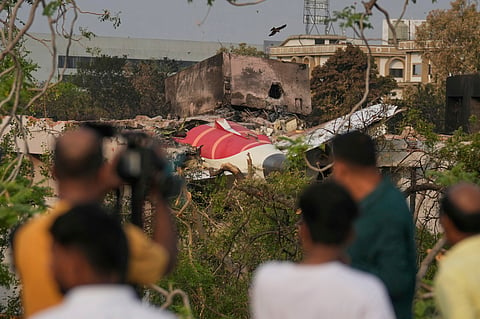The first six months of 2025 will not be remembered by the turning of calendar pages, but by the nation's collective heart. January began with the promise of faith and prosperity, a country striding into a new year. But by the time the monsoon clouds began to gather in June, that optimism had been systematically dismantled, washed away by a relentless tide of tragedy.
Tragedies of 2025: The Year So Far
From the sacred banks of the Ganges to the roaring stadiums of the IPL, a series of unimaginable tragedies tested the resilience of a nation, leaving a scar that will take a generation to heal.
In just half a year, a shadow has fallen over India, stretching from the holy grounds of the Kumbh Mela to the jubilant streets of Bengaluru. Each month seemed to bring a fresh wound. This new and unforeseen disaster tested the very limits of our resilience.
The Kumbh Mela Tragedy
The Maha Kumbh Mela in Prayagraj is a spiritual spectacle like no other. On January 29, the day of Mauni Amavasya, an ocean of humanity gathered on the banks of the Ganges. Millions of devotees waited patiently in the cool, pre-dawn mist for the Brahma Bela, the most sacred moment to take a holy dip.
But the sheer weight of over 60 million people strained the city's infrastructure to its breaking point. A narrow approach path became dangerously congested at the famous Sangam ghat, where the rivers meet. As the auspicious moment neared, a powerful surge from the back of the crowd created a devastating domino effect.
People at the front were pushed forward, losing their footing and falling, only to be trampled by the unstoppable wave of humanity behind them. Once filled with sacred chants and prayers, screams of terror pierced the air, and piles of slippers told the story of the 37 lives tragically lost and the 60 others injured in a moment of shattered faith.
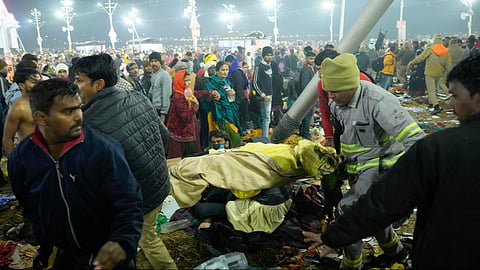
Delhi Railway Station Tragedy
The horror of the Kumbh did not remain in Prayagraj. Two weeks later, on February 15, its tragic echo was felt hundreds of kilometers away. The Delhi Railway Station was a pressure cooker of activity, packed with pilgrims heading to the Mela. A last-minute platform change sent thousands rushing up and over a crowded footbridge. In the frantic push, the bridge became a trap. Eighteen people, including 14 women and three children, were crushed to death, their journey of devotion ending before it could truly begin.
On that very same day, another group of ten pilgrims bound for the Kumbh met a terrible end. They were traveling together in an SUV on a highway near Prayagraj, their vehicle filled with hope and anticipation. In a horrific instant, their SUV collided head-on with a bus. The impact was catastrophic, and all ten passengers died instantly, their pilgrimage cut short in a brutal flash of steel and glass.
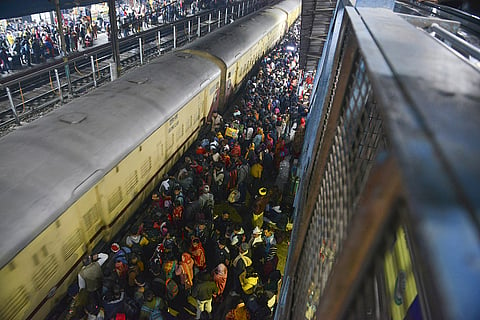
The Pahalgam Attack
Kashmir's Pahalgam valley, known for its breathtaking beauty, became the backdrop for a cold-blooded act of terror on April 22. Pakistani terrorists ambushed a group of tourists. The attackers forced the tourists to reveal their religious identities before opening fire.
They systematically targeted the Hindu tourists in the group, but their violence was indiscriminate. This horrifying attack, which claimed 26 lives in total, was not just an attack on one community, but on the very idea of peace. In response, India launched "Operation Sindoor," a swift and fierce military operation that destroyed nine terrorist camps across the border, bringing India and Pakistan to a dangerous conflict.
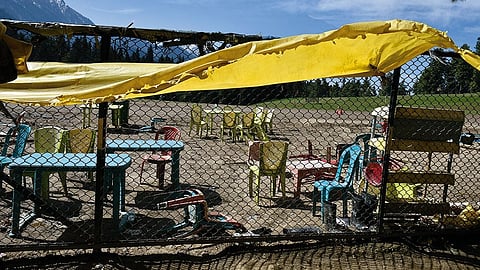
The IPL Celebration Stampede
On June 4, Bengaluru was a city electric with joy. The local cricket team, Royal Challengers Bengaluru (RCB), had just won its first-ever IPL trophy, and the city was ready to celebrate. Tens of thousands of ecstatic fans, draped in the team's red and gold colors, poured onto the streets near the Chinnaswamy Stadium, hoping to catch a glimpse of their heroes during the victory parade.
But the sheer volume of the crowd, combined with poor management, created a deadly situation. As fans surged forward to get closer to the team bus, barricades buckled under the pressure and collapsed. People fell into the gap and were instantly swallowed by the crush of the crowd behind them. The joyous roars of celebration tragically drowned out the first cries for help. In a matter of moments, a scene of pure happiness turned into a nightmare, leaving 11 fans dead and 47 injured.
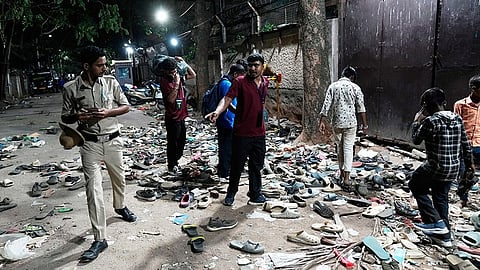
The Air India Crash in Ahmedabad
The most soul-crushing blow of the year so far came on June 12. Air India Flight 242 was on its final approach to Ahmedabad, carrying 242 people—families returning from vacation, students, and business travelers. At approximately 1:38 p.m., something went terribly wrong. The plane lost contact and crashed into a residential neighborhood on the outskirts of the city.
Of the 242 people on board, only one miraculously survived. The tragedy didn't end there; the crash also claimed the lives of 33 people on the ground whose homes were in the direct path of the falling aircraft, bringing the total death toll to 275. The incident sent shockwaves across the globe and is being called one of the worst aviation disasters in Indian history, a final, devastating punctuation mark on six months of unending grief.
